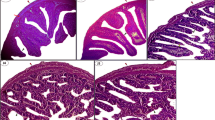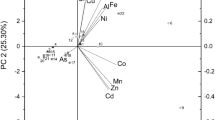Abstract
This study evaluated the exploitation of unprocessed agricultural discards in the form of fresh vegetable leaves as a diet for the sea urchin Paracentrotus lividus through the assessment of their effects on gonad yield and quality. A stock of wild-caught P. lividus was fed on discarded leaves from three different species (Beta vulgaris, Brassica oleracea, and Lactuca sativa) and the macroalga Ulva lactuca for 3 months under controlled conditions. At the beginning and end of the experiment, total and gonad weight were measured, while gonad and diet total carbon (C%), nitrogen (N%), δ13C, δ15N, carbohydrates, lipids, and proteins were analyzed. The results showed that agricultural discards provided for the maintenance of gonad index and nutritional value (carbohydrate, lipid, and protein content) of initial specimens. L. sativa also improved gonadic color. The results of this study suggest that fresh vegetable discards may be successfully used in the preparation of more balanced diets for sea urchin aquaculture. The use of agricultural discards in prepared diets offers a number of advantages, including an abundant resource, the recycling of discards into new organic matter, and reduced pressure on marine organisms (i.e., macroalgae) in the production of food for cultured organisms.





Similar content being viewed by others
Abbreviations
- IDC:
-
Individual daily consumption
- Wt:
-
Total wet weight
- Gw:
-
Gonad wet weight
- GI:
-
Gonad index
- DO:
-
Dark orange
- BO:
-
Bright orange
- YO:
-
Yellow-orange
- MO:
-
Mango orange
- AFDW:
-
Ash-free dry weight
References
Andrew NL, Agatsuma Y, Ballesteros E, Bazhin AG, Creaser EP, Barnes DKA, Botsford LW, Bradbury A, Campbell A, Dixon JD, Einarsson S, Gerring PK, Hebert K, Hunter M, Hur SB, Johnson CR, Juinio-Meñez MA, Kalvass P, Miller RJ, Moreno CA, Palleiro JS, Rivas D, Robinson SML, Schroeter SC, Steneck RS, Vadas RL, Woodby DA, Xiaoqi Z (2002) Status and management of world sea urchin fisheries. Oceanogr Mar Biol Annu Rev 40:343–425
Boudouresque CF (1987) Colloque international sur Paracentrotus lividus et les oursins commestibles. GIS Posidonie Publication, Marseille
Boudouresque CF, Verlaque M (2001) Ecology of Paracentrotus lividus. In: Lawrence JM (ed) Edible Sea Urchins. Elsevier, Amsterdam
Caldwell CR, Britz SJ (2006) Effect of supplemental ultraviolet radiation on the carotenoid and chlorophyll composition of green house-grown leaf lettuce (Lactuca sativa L.) cultivars. J Food Compost Anal 19:637–644
Carboni S, Vignier J, Chiantore M, Tocher DR, Miguad H (2012) Effects of dietary microalgae on growth, survival and fatty acid composition of sea urchin Paracentrotus lividus throughout larval development. Aquaculture 324–325:250–258
Cook EJ, Kelly MS (2007) Effect of variation in the protein value of the red macroalga Palmaria palmata on the feeding, growth and gonad composition of the sea urchins Psammechinus miliaris and Paracentrotus lividus (Echinodermata). Aquaculture 270:207–217
Cook EJ, Bell MV, Black KD, Kelly MS (2000) Fatty acid compositions of gonadal material and diets of the sea urchin, Psammechinus miliaris: trophic and nutritional implications. J Exp Mar Biol Ecol 255:261–274
De Jong-Westman M, March BE, Carefoot TH (1995) The effect of different nutrient formulation in artificial diets on gonad growth in the sea urchin Strongylocentrotus droebachiensis. Can J Zool 73:1495–1502
Devin M, Peacock RJ, Stence HD (2004) Development and grow-out techniques for juvenile sea urchins Strongylocentrotus droebachiensis. In: Lawrence JM, Guzman O (eds) Sea urchins: fisheries and ecology. DEStech, Lancaster
Dubois M, Gilles K, Hamilton JK, Rebers PA, Smith F (1956) Colorimetric method for determination of sugars and related substances. Anal Chem 28:350–356
Ebert TA (1996) Adaptative aspects of phenotypic plasticity in echinoderms. Oceanol Acta 19:347–355
Fabbrocini A, Volpe MG, Di Stasio M, D’Adamo R, Maurizio D, Coccia E, Paolucci M (2012) Agar-based pellets as feed for sea urchins (Paracentrotus lividus): rheological behaviour, digestive enzymes and gonad growth. Aquac Res 43:321–331
Fernandez CM (1997) Effect of diet on the biochemical composition of Paracentrotus lividus (Echinodermata: Echinoidea) under natural and rearing conditions. Comp Biochem Physiol 118A:1377–1384
Fernandez CM, Boudouresque CF (1998) Evaluating artificial diets for small Paracentrotus lividus (Echinodermata: Echinoidea). In: Mooi R, Telford M (eds) Echinoderms. Balkema Publishers, Rotterdam
Fernandez CM, Boudouresque CF (2000) Nutrition of the sea urchin Paracentrotus lividus (Echinodermata: Echinoidea) fed different artificial food. Mar Ecol Progr Ser 204:131–141
Fernandez CM, Caltagirone A (1994) Growth rate of adult Paracentrotus lividus in a lagoon environment: the effect of different diet types. In: David B, Guille A, Feral JP, Roux M (eds) Echinoderms through time. Balkema Publishers, Rotterdam
Gerchacov SM, Hachter PG (1972) Improved technique for analysis of carbohydrates in sediment. Limnol Oceanogr 17:938–943
Hammer HS, Powell ML, Jones WT, Gibbs VK, Lawrence AL, Lawrence JM, Watts SA (2012) Effect of feed protein and carbohydrate levels on feed intake, growth, and gonad production of the sea urchin Lytechinus variegatus. J World Aquac Soc 43:145–158
Hartree EF (1972) Determination of proteins: a modification of the Lowry method that gives a linear photometric response. Anal Biochem 48:422–427
Jacquin AG, Donval A, Guillou J, Leyzour S, Deslandes E, Guillou M (2006) The reproductive response of the sea urchins Paracentrotus lividus (G.) and Psammechinus miliaris (L.) to a hyperproteinated macrophytic diet. J Exp Mar Biol Ecol 339:43–54
Kelly MS, Chamberlain J (2010) Recent advances in Sea-Urchin aquaculture and enhancement in Scotland and Ireland. Bull Aquac Assoc Can 108–1:23–29
Lawrence JM, Olave S, Otaiza R, Lawrence AL, Bustos E (1995) A comparison of gonad production in Loxechinus albus (Echinodermata: Echinoidea) fed algae and prepared feeds. Am Zool 35:109A
Lawrence JM, Olave S, Otaiza R, Lawrence AL, Bustos E (1997) Enhancement of gonad production in the sea urchin Loxechinus albus in Chile fed extruded feeds. J World Aquac Soc 28:91–96
Marsh JB, Wenstein DB (1966) A simple charring method for determination of lipids. J Lipid Res 7:574–576
Matsuno T, Tsushima M (2001) Carotenoids in sea urchins. In: Lawrence JM (ed) Edible sea urchins: biology and ecology. Elsevier, Amsterdam
McBride SC, Price RJ, Tom PD, Lawrence JM, Lawrence AL (2004) Comparison of gonad quality factors: colour, hardness and resilience, of Strongylocentrotus franciscanus between sea urchins harvested from the Northern California fishery. Aquaculture 233:405–422
McLaughlin G, Kelly MS (2001) Effect of artificial diets containing carotenoid-rich microalgae on gonad growth and colour in the sea urchin Psammechinus miliaris (Gmelin). J Shellfish Res 20:377–382
Mortensen A, Siikavuopio SI, Raa J (2004) Use of transglutaminase to produce a stable sea urchin feed. In: Lawrence JM, Guzman O (eds) Sea urchin fisheries and ecology. DESTec Publications Inc., Lancaster
Pais A, Serra S, Meloni G, Saba S, Ceccherelli G (2012) Harvesting effects on Paracentrotus lividus population structure: a case study from northwestern Sardinia, Italy, before and after the fishing season. J Coast Res 28(3):570–575
Pearce CM, Daggett TL, Robinson SMC (2002) Effect of protein source ratio and protein concentration in prepared diets on gonad yield and quality of the green sea urchin, Strongylocentrotus droebachiensis. Aquaculture 214:307–332
Pearce CM, Daggett TL, Robinson SMC (2003) Effects of starch type, macroalgal meal source, and b-Carotene on gonad yield and quality of the green sea urchin Strongylocentrotus droebachiensis (Muller), fed prepared diets. J Shellfish Res 22:505–519
Pearce CM, Daggett TL, Robinson SMC (2004) Effect of urchin size and diet on gonad yield and quality in the green sea urchin (Strongylocentrotus droebachiensis). Aquaculture 233:337–367
Rice DL (1982) The detritus nitrogen problem: new observation and perspectives from organic geochemistry. Mar Ecol Prog Ser 9:153–162
Robinson SMC, Colborne L (1997) Enhancing roe of the green sea urchin using an artificial food source. Bull Aquac Assoc Can 97:14–20
Robinson SMC, Castell JD, Kennedy EJ (2002) Developing suitable colour in the gonads of cultured green sea urchins (Strongylocentrotus droebachiensis). Aquaculture 206:289–303
Schlosser SC, Lupatsch I, Lawrence JM, Lawrence AL, Shpigel M (2005) Protein and energy digestibility and gonad development of the European sea urchin Paracentrotus lividus (Lamarck) fed algal and prepared diets during spring and fall. Aquac Res 36:972–982
Senaratna M, Evans LH, Southam L, Tsvetnenko E (2005) Effect of different feed formulations on feed efficiency, gonad yield and gonad quality in the purple sea urchin Heliocidaris erythrogramma. Aquac Nutr 11:199–207
Shpigel M, McBride SC, Marciano S, Ron S, Ben-Amotz A (2005) Improving gonad colour and somatic index in the European sea urchin Paracentrotus lividus. Aquaculture 245:101–109
Underwood AJ (1997) Experiments in ecology: their logical design and interpretation using analysis of variance. Cambridge University Press, Cambridge
Vadas RL Sr, Beal B, Dowling T, Fegley JC (2000) Experimental field test on natural algal diets on gonad index and quality in the green sea urchin, Strongylocentrotus droebachiensis: a case for rapid summer production in post-spawned animals. Aquaculture 182:115–135
Vidal GB (2004) Use of artificial diets in the culture of the sea urchin Loxechinus albus. In: Lawrence JM, Guzman O (eds) Sea urchins: fisheries and ecology. DEStech Publications Inc., Lancaster
Watts SA, Boettger SA, McClintock JB, Lawrence JM (1998) Gonad production in the sea urchin Lytechinus variegatus (Lamarck) fed prepared diets. J Shellfish Res 17:1591–1595
Acknowledgments
This research was supported by INNOVAQUA Project (PON02_00451_3362185) and Flagship Project RITMARE—Italian Research for the Sea—both funded by the Italian Ministry of Education, University, and Research. We are grateful to A. Augsburger Bachmann for supportive discussion in the early stages of this study, to P. Scariano and A. Savona for assistance with feeding experiments, and to A.E. Aleo and V.A. Tumbarello for help in laboratory analyses.
Author information
Authors and Affiliations
Corresponding author
Rights and permissions
About this article
Cite this article
Vizzini, S., Miccichè, L., Vaccaro, A. et al. Use of fresh vegetable discards as sea urchin diet: effect on gonad index and quality. Aquacult Int 23, 127–139 (2015). https://doi.org/10.1007/s10499-014-9803-5
Received:
Accepted:
Published:
Issue Date:
DOI: https://doi.org/10.1007/s10499-014-9803-5




